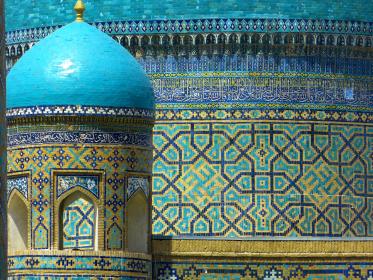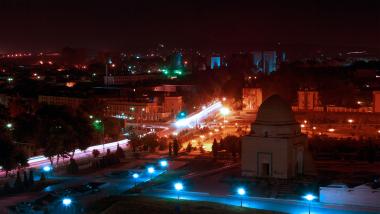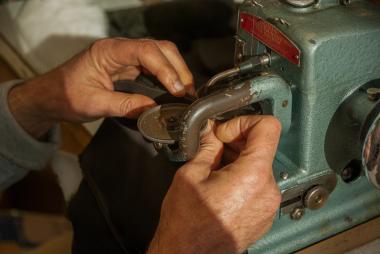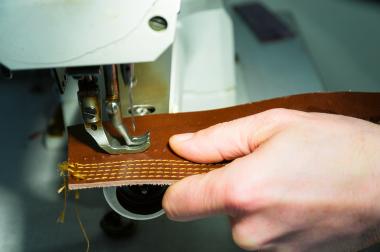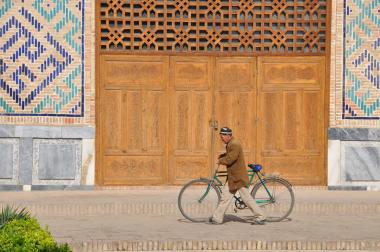UZBEKISTAN PUSHES FOR GLOBAL SHOE AND LEATHER MARKET
- Projects worth USD 52 million planned
Tashkent (GTAI) - Uzbekistan wants to become an international player in the shoe and leather industry. The market offers foreign companies a lot of potential for cooperation.
The Government of Uzbekistan has adopted a new initiative for the modernization and expansion of the leather, footwear, leather goods and fur industries. It is aimed at increasing efficiency and expanding production as well as accelerating integration into the international market. Producers are focusing primarily on Russia and Kazakhstan, but also on Western markets such as France. Foreign companies are welcome to participate in the planned projects. In the long term, value chains are to be created, clusters established and exports promoted.
Cooperation with Uzbek companies are possible in the production of leather goods, passive contract finishing, supply of equipment, auxiliary materials and chemicals to companies or in the trade with footwear, leather and fur goods. There are plenty of high-quality raw materials and a large potential of available and motivated workers.
The framework conditions for companies in Uzbekistan have improved noticeably. Labor and energy costs are low. In 2017, the government initiated economic liberalization and opening of the country. Uzbekistan wants to more than double its shoe exports by 2020. In 2017 Uzbek manufacturers sold shoes worth USD 150 million abroad.
Foreign investors are planning new projects
The O´zcharmsanoat's key 2019 investment program lists projects valued at USD 52 million. In addition, there are other projects which have not yet been included in the program due to ongoing coordination with potential foreign investors or which are planned in companies that operate outside O´zcharmsanoat.
An overview of current and planned projects for the development of the leather, shoe, leather goods and fur industry in Uzbekistan can be downloaded here.
Association O´zcharmsanoat is the main contact partner
The Association of the Leather Industry O´zcharmsanoat acts on behalf of the state as the central regulator and coordinator of the sector. It was restructured in May 2018 and controls, among other things, investments and foreign trade. Almost all notable Uzbek players in the leather industry are active under its umbrella. These include 30 automated slaughterhouses (supplied by livestock farms), 63 tanneries, including pre-tanning facilities, 131 shoe manufacturers and 28 producers of other products, including fur products (as of June 30th 2018). It also operates 13 warehouses for the purchase of raw materials from private animal breeders.
The leather processing companies produce hard leather (foot and insole leather) and upper leather, mainly chrome leather goods and Russia leather. The annual raw material supply amounts to around nine million hides and five million skins. About two fifths of this volume is currently exported. Among the 252 companies, which are employing about 26,000 people, there are 47 companies with foreign capital participation as well as numerous purely private Uzbek companies.
Only about a dozen of the 131 shoe manufacturers, which are currently active at O´zcharmsanoat, employ 100 people or more. The development of efficient medium-sized structures in the sector is still in its infancy and is likely to gain momentum.
Government grants tax and tariff preferences for five years
The slaughterhouses and manufacturers of raw, semi-finished and finished goods as well as the new foreign trade company Uzcharmimpex will receive tax and customs relief. These apply to existing companies of the association O´zcharmsanoat until January 1st 2023. Newly established companies can benefit from the preferences for five years from the date of company foundation.
In detail, the following preferential conditions are granted:
- Exemption from the profit and wealth tax or the uniform tax levy for micro and small companies
- Exemption from compulsory contributions to earmarked central funds
- Exemption from import duties for the import of equipment, completion parts, raw materials and materials which cannot be procured in the country and are intended for production.
- Granting a 60-day deferment of payment of import duties (from the date of the customs declaration) for the import of all other equipment, completion parts, raw materials and supplies and other goods for production needs
- VAT exemption for imports of raw materials and intermediate products for the use in production and of equipment for footwear production
Uzcharmimpex imports equipment for Uzbek companies
The foreign trade company Uzcharmimpex is engaged both in the export of sector products and in the import of equipment, spare parts, auxiliary materials and chemicals. The list of imported capital goods includes butchery, cutting, slicer, splitting and shaping machines, vacuum dryers, electronic measuring instruments for leather surface measurement, sewing machines and footwear assembly equipment.
The industry modernization initiative also provides for the creation of an industry development fund. This is fed by a levy amounting to 5 percent of export earnings from chrome-tanned hides and skins that have not yet been dressed (wet blue). These funds are intended for investment projects, the granting of loan guarantees, the financing of ISO certifications, the promotion of trade fair participations and the promotion of training and further education.
Usbekistan doubles shoe production
According to the Association of the Leather Industry O´zcharmsanoat, about 40 million pairs of shoes were produced in Uzbekistan in 2017, including 17 million pairs of full and partial leather shoes. An output of 34.2 million pairs of leather shoes is planned for 2020. Then the leather production is expected to reach a volume of 1.3 billion square decimeters. For 2018, the association expects 1 billion square decimeters of leather. O´zcharmsanoat aims to increase its total exports to USD 480 million by 2020 and to USD 1 billion by 2025 (Actual 2017: USD 150 million).
The collapse of the Soviet Union, a failed privatization policy and a difficult business climate led to a breakdown in production in the mid-1990s to around 2009/2010. On average, manufacturers produced less than four million pairs of shoes a year. Previously, around 30 medium-sized manufacturers brought 50 million pairs of shoes onto the market each year. In addition, 2.4 million bags and 200,000 pairs of gloves were produced annually. After 2010, there was a start-up boom in the sector thanks to preferential tax arrangements for particularly small companies.
Contact address
O´zcharmsanoat uyushmasi (Association of the Uzbek Leather Industry)
Contact person Sardor Uktamovich Umurzakov, Chairman of the Management Board
109, Mustakillik ave., 100192 Tashkent/Uzbekistan
T +99871 267 58 47, 268 40 66
F +99871 268 40 66rais@uzcharm.uz, info@uzcharm.uz,
Directory of companies http://www.uzcharmexpo.uz/spravochnik
rais@uzcharm.uz, info@uzcharm.uz
http://www.uzcharm.uz
Uwe Strohbach, Germany Trade & Invest www.gtai.de


